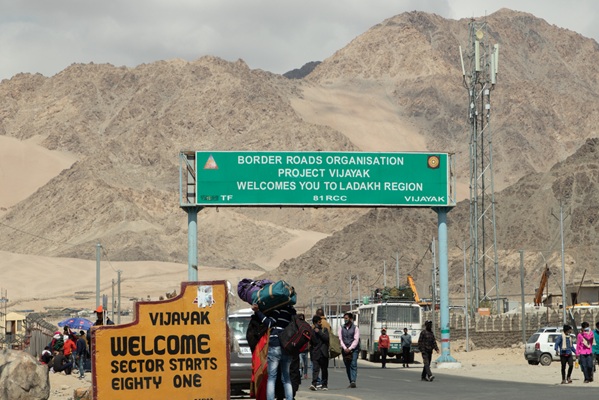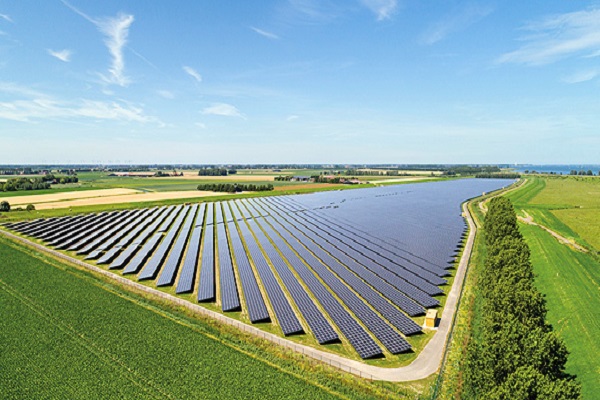.png)

Lt Gen Syed Ata Hasnain is a former Commander of India’s Kashmir Corps and Chancellor of the Central University of Kashmir.
September 27, 2025 at 8:36 AM IST
The recent turbulence in Ladakh, which led to unrest on the streets of Leh and Kargil, has drawn attention to the unique set of aspirations and challenges faced by this sensitive border region. While the immediate incidents have been unsettling, they underline the deeper currents of expectations that have existed in Ladakh.
At the outset it is important to clarify that these protests are not connected to events such as in Nepal and Bangladesh that have recently occupied media attention; they stem from local aspirations rooted in the unique sub-regional context of Ladakh. For India it’s a sensitive issue because Ladakh is high on its security sensitivity graph. An area not easily accessible and forming a part of a territory claimed by inimical powers. Violent protests in such a land can always be easily read as attempts by adversaries to chart their narratives.
For decades, Ladakh remained part of the erstwhile state of J&K, now a Union Territory. In 2019 by an Act of Parliament Ladakh was detached from J&K and made an independent UT but without an elected legislature. The region’s geographic isolation, coupled with its cultural and ethnic distinctiveness, meant that local voices often felt subsumed under larger state dynamics. The demand for separation from J&K had historical roots, and many in Ladakh welcomed the UT status granted in 2019. It was seen as a recognition of their individuality and an opportunity for direct development support from the Centre. Initially, this generated optimism, especially in Leh, but the absence of an elected assembly soon created disquiet. UT status ensured administrative visibility, yet its structure limited local political agency. Over time, the gap between aspiration and governance seems to have become pronounced.
This sense of limitation is not abstract. Residents worry about control over land, employment, and cultural identity. Without constitutional safeguards, Ladakhis fear the possibility of demographic shifts through outside settlement, just as they worry about large-scale projects that might disrupt fragile ecology. Civil society groups in both Leh and Kargil, historically divided along religious and regional lines, have now come together to raise common demands — statehood, inclusion under the Sixth Schedule of the Constitution, and greater participation in governance. This unity, cutting across community lines, represents a mature political awakening, and demonstrates that aspirations here are not destabilising but integrative.
Any conversation on Ladakh must also recognise its internal diversity. Leh district, with its predominantly Buddhist population, and Kargil district, with its Muslim majority, represent distinct social and cultural identities. Each has its own priorities, and while both seek political representation and development, their pathways sometimes diverge. In other parts of India such diversity is not unusual, but in Ladakh it intersects with the region’s frontier geography. On one side lies the Line of Actual Control with China, a “no war, no peace” zone since the clashes of 2020. On the other is the Line of Control near Kargil, more ebullient in nature and with a history of cross border exchanges. To the north lies Siachen, source of critical water flows and symbolic of India’s strategic resilience. This is why Ladakh’s civil aspirations and its strategic significance are inseparable.
Indeed, the paradox is striking. Ladakh has grown more secure militarily, with stronger deployment and infrastructure, yet this very emphasis on security sometimes overshadows civilian governance. Development is often viewed through the prism of strategic necessity rather than local need. For the people of Ladakh, this creates a sense of imbalance — they remain patriotic and steadfast, but feel their voices should carry greater weight in shaping their future.
Recent protests must therefore be seen not as rebellion but as participation. Local leaders have repeatedly stressed that their demands lie well within the framework of the Constitution. They seek partnership, not separation. Their refrain is simple: decisions about Ladakh should not be made without Ladakhis. The images of protest may have unsettled the nation, but their essence lies in reinforcing, not rejecting, democratic belonging. While some activists such as Sonam Wangchuk have chosen hunger strikes to highlight grievances, it is important that the narrative not revolve around individuals alone but on the broader aspirations of the people of Ladakh, including those in Kargil. Placating personalities is no substitute for addressing collective concerns. Current measures by the government at the centre should be viewed as retrieval to stabilisation which is the basic condition at which ameliorative action must begin.
In today’s connected world, it is natural that global narratives influence even the most remote regions. Yet it would be mistaken to characterise Ladakh’s current unrest as youthful imitation of generational movements elsewhere. The issues here are rooted in Ladakh’s own trajectory—from being part of Jammu and Kashmir to its present Union Territory status. The agitation reflects accumulated aspirations for empowerment, land and job safeguards, and environmental protection. These are not transient impulses but outcomes of decades of lived experience.
What then is the path forward? The answers do not require drastic reinvention. Several constructive measures can restore confidence. One possibility could be the establishment of an elected assembly or legislative council for Ladakh with jurisdiction over local matters — land, employment, culture, environment — while the Centre retains authority over strategic concerns. Such a structure would combine the benefits of Union Territory administration with a sense of local participation.
A second idea could be legislation modelled on protections elsewhere in tribal and hill regions—ensuring land ownership remains primarily with locals and employment opportunities are prioritised for Ladakh’s youth. This would address the demographic anxieties voiced in both Leh and Kargil. Third, a structured development compact, co-created by the Centre and local bodies, could direct investment into climate-resilient livelihoods, renewable energy, and infrastructure with transparent community oversight. By aligning development with Ladakh’s ecological sensitivities, this would reinforce trust.
Dialogue remains central to all of these steps. Independent reviews of recent disturbances, regular consultations with leaders from both districts, and inclusive platforms involving youth, religious institutions, and civil society can ensure that all voices are heard. This process itself can serve as a confidence-building measure. It is also important that security and governance complement each other. In a frontier region, militarization is inevitable. As someone experienced in the handling of all three border regions of Ladakh I am aware of the degree to which the Army’s presence and outreach make a difference. The local communities are hugely appreciative. This is the model to be adopted by all. The self-esteem of the Ladakhi people remains sky high due to the full recognition of the role their sons played in the Kargil War of 1999 and in various other episodes of the valour of the Ladakh Scouts, a cutting-edge organisation within the Indian Army.
Ultimately, Ladakh’s people have demonstrated unwavering patriotism. They have endured isolation, served in uniform, and stood steadfast in guarding the nation’s borders. Their current demands are not radical; they are rooted in dignity and participation. It’s just that violence in such an environment is a debilitating factor and needs to be completely eschewed in favour of full dialogue. National security and local empowerment are not competing goals, they are mutually reinforcing.
The turbulence in Ladakh is thus a reminder that political transitions must be accompanied by inclusivity and foresight. Union Territory status was a historic step, but it may not be the final word on Ladakh’s governance journey. The absence of a legislative assembly and constitutional protections have created perceptions of limited self-rule. These concerns, if addressed early, will ensure stability, harmony, and security in India’s northern frontier. Dialogue must continue at all times, for a secure frontier begins with secure citizens confident that their voices matter in the system they defend.




